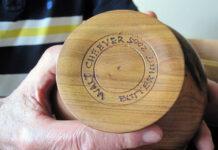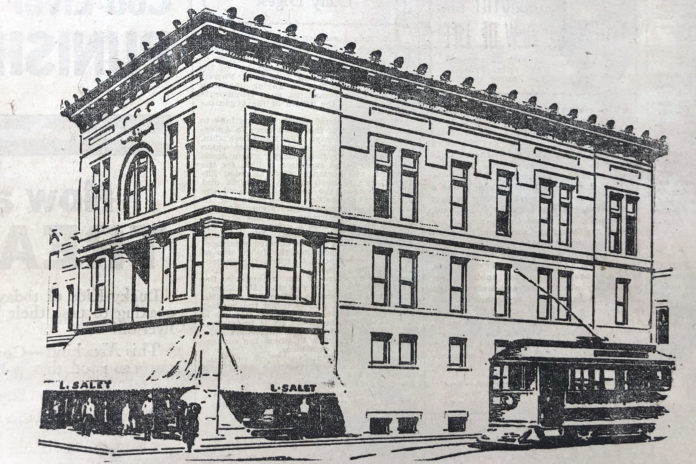
When urban renewal efforts hit Mankato in the 1960s and ‘70s, the area hardest hit was downtown, where many buildings that served as the keys to business success at the city’s founding a century earlier were in disrepair and deemed lost to time. Among those was the town’s department store leader, Salet’s.
Kron and Salet
Although Salet’s started in a building in the middle of the 100 block of North Front Street, which was later referred to as “the little store,” it was best known for the three-story building at Front and Main streets, diagonally across from the Saulpaugh Hotel. Designed by local architect H. C. Gerlach, the building had been erected in 1895 by Fred Kron as a grand department store.
On April 17, 1895, the Free Press said, “It will be handsome and as substantially constructed a block as can be found in the state, and in every way will be a credit and honor to its owner and to the city.” With 50 feet facing on Front Street, it ran 100 feet back and stood three stories high. It was built of brick, with stone and iron trimmings, with a pink stone taken from Mankato quarries.
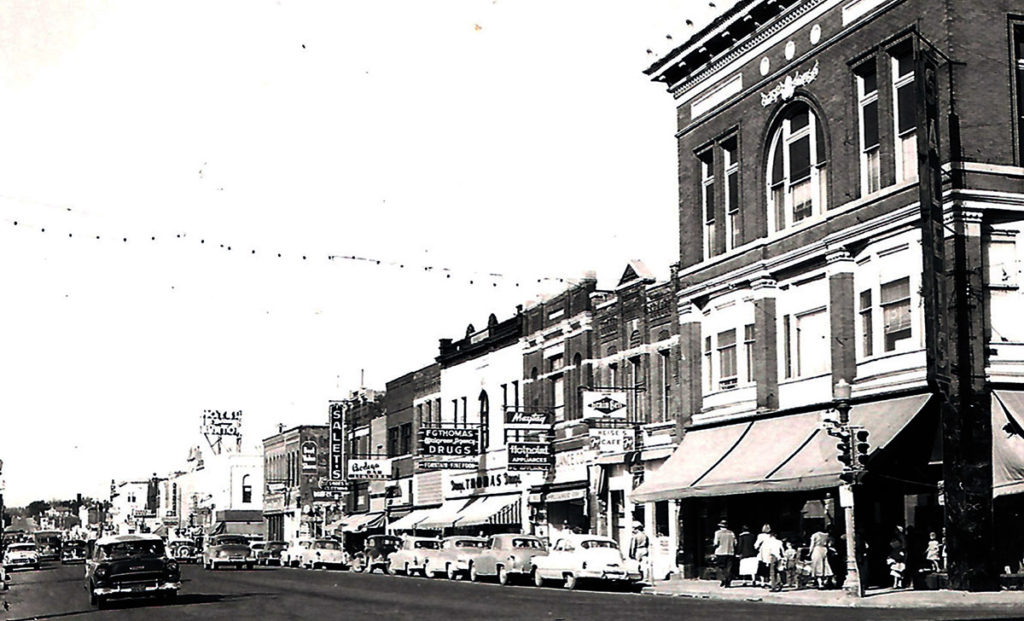
Entrance was through a center double door, which was within a two-story vestibule with display windows on either side that also extended to the second floor. Above the entrance was an arched window opening. Showrooms were in the basement, first and second floors, while the third floor was constructed as a gathering hall, though it was designed to also be usable as a showroom.
At nearly the same time as Kron’s construction, in 1896, Leon Salet was established in a smaller building in the same block of downtown. Begun as a wholesale business, it provided wares to many merchants throughout Southern Minnesota and Northern Iowa. Because they were able to purchase merchandise in larger quantities, they provided lower prices and built a highly successful business. With this success came the need for more space, which they attained in 1917 when they purchased the stock of Fred Kron’s store at 101 N. Front St. and leased the building.
Purchasing a new building
By 1928, when Salet purchased the former Kron building, Salet’s was wholesaling the following items: men’s and women’s clothing, furnishings, hosiery and underwear, notions, dry goods and shoes. The move in 1917 allowed for great expansion of the wholesale and retail ends of business, all following “the same policy which has been responsible for the past growth of the business, honest goods, honestly advertised and sold for cash only,” reported The Free Press of January 6, 1928.
I just can’t explain how close we feel with each other. Working there was just like family. We became, and still are, very close friends.Harriet Tillman, accountant from 1936-63
With the purchase of the building came a great deal of remodeling and celebration. The front vestibule, which had been 12 feet deep and two stories high, was expanded to 19 feet deep to provide 135 feet of display frontage, according to the April 11, 1928, Free Press. Awnings were added to the street sides of this “arcade,” and new lighting made it the brightest in Southern Minnesota. New display fixtures, including new wax forms were added.
On the inside, all floors were replaced with oak, and the basement was to be transformed into the equivalent of a clearance floor. In addition, a wholesale warehouse and shipping room were added to the back of the “small store” in the middle of the block. In a March 19, 1928, newspaper story, it was reported, “The basement will be operated as a separate store, merchandise being bought especially for it.” It would include dry goods, ready-to-wear clothing, men’s shoes, notions and men’s and women’s furnishings, as well as close out merchandise, surplus stocks, mill ends and irregulars.
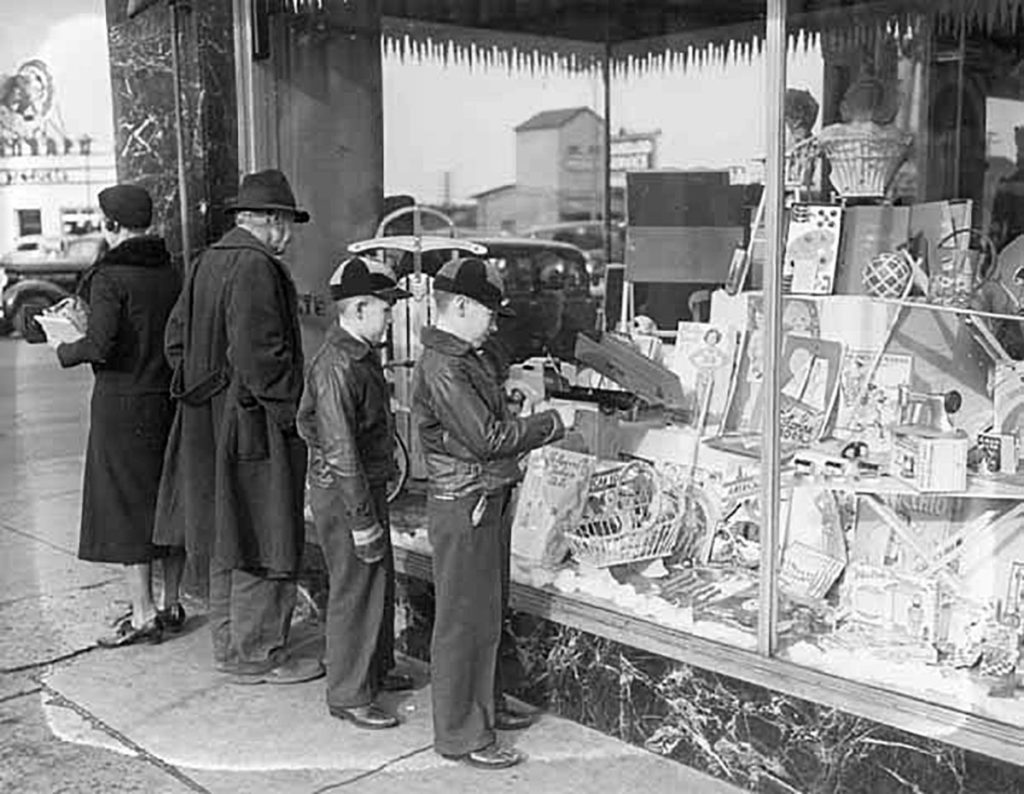
A growing presence
Just as the Mankato presence was improving, so was the presence throughout southern Minnesota. Salet’s announced the opening of a store in Owatonna, scheduled to open about March 1, 1929. The building, previously operating as an “emporium,” would carry complete lines of women’s apparel, dry goods, notions, men’s clothing, footwear and other goods. It was planned to be the first of many similar stores.
Although it was stated there were about 50 department stores located within 200 miles of Mankato that were sponsored and financed by Salet’s, but on which the name does not appear, these new plans would bring the Salet’s name to stores in nearby towns. Most would be owned by the manager. The Free Press reported on Jan. 2, 1929, “It is the intention of Salet company to open a store of this kind in every city of 3,000 or more population in this part of the Northwest which does not have a Salet wholesale account or a sponsored store.” “Northwest” was commonly used to describe this expanding part of the United States.
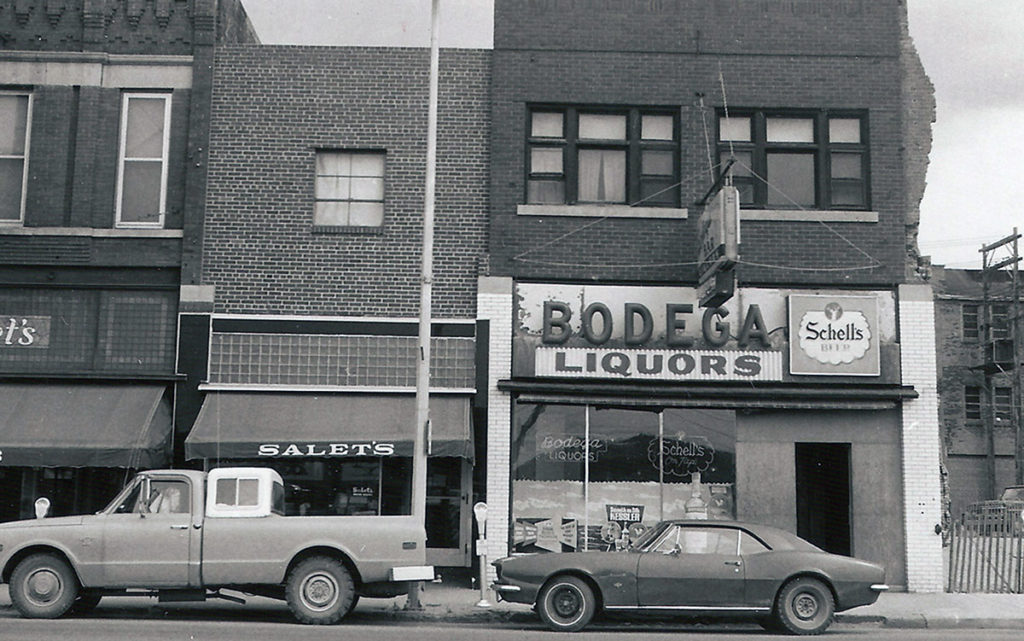
The success of Salets continued to match the growth of Mankato. In 1940 it celebrated 43 successful years, and a newspaper article highlighted its successes:
- The initiative of Leon and Anna Salet to open a store that served the industrious agricultural sector and for the couple to work it themselves until they could afford clerks.
- The move to the larger store on the corner when business grew. And the vision of son Louis Salet to get into the wholesale business for merchants in the vicinity.
- The great variety of stock housed in a building that included a passenger elevator to all floors. In other words, creating an environment that drew shoppers in.
It’s no wonder that the store was so successful. Mr. Salet, Jr., …. always told us ‘you are the crew — I’m just the captain of the ship.’ He was very close to each and every one of his employees, and they could go to his office to discuss things in a very private and understanding way.Harriet Tillman
To celebrate the 50th anniversary of the store, employees planned a celebration, and the community took part in it. About 150 people were expected at the program on a June evening in 1946, with a dinner at the Saulpaugh Hotel. Thirty minutes of that evening would be broadcast on KYSM radio. Reminiscing included talk of farmers gathered around a pot-bellied stove and kerosene lamps in the early days: “They traveled by train and came from miles around, because this was the metropolitan center to farmers,” Louis Salet said. “Three railroads, now running through Mankato, came through here at that early date, and at 4 o’clock in the evening trains were as crowded with shoppers going home as busses now are.”
The June 11 newspaper report put it this way: “Mama, papa, and eight or ten children might be seen in the store at one time, and the whole family was outfitted. Or some of the children were left at home to do the chores and parents had a list of those children, with their ages, and clothing was bought for them. But when the shopping was done each member, from the breadwinner down to the infant, was scratched off the list, having supplies to last for a while.” Coming to Mankato, and perhaps Salet’s in particular, was an event looked forward to by the entire family.
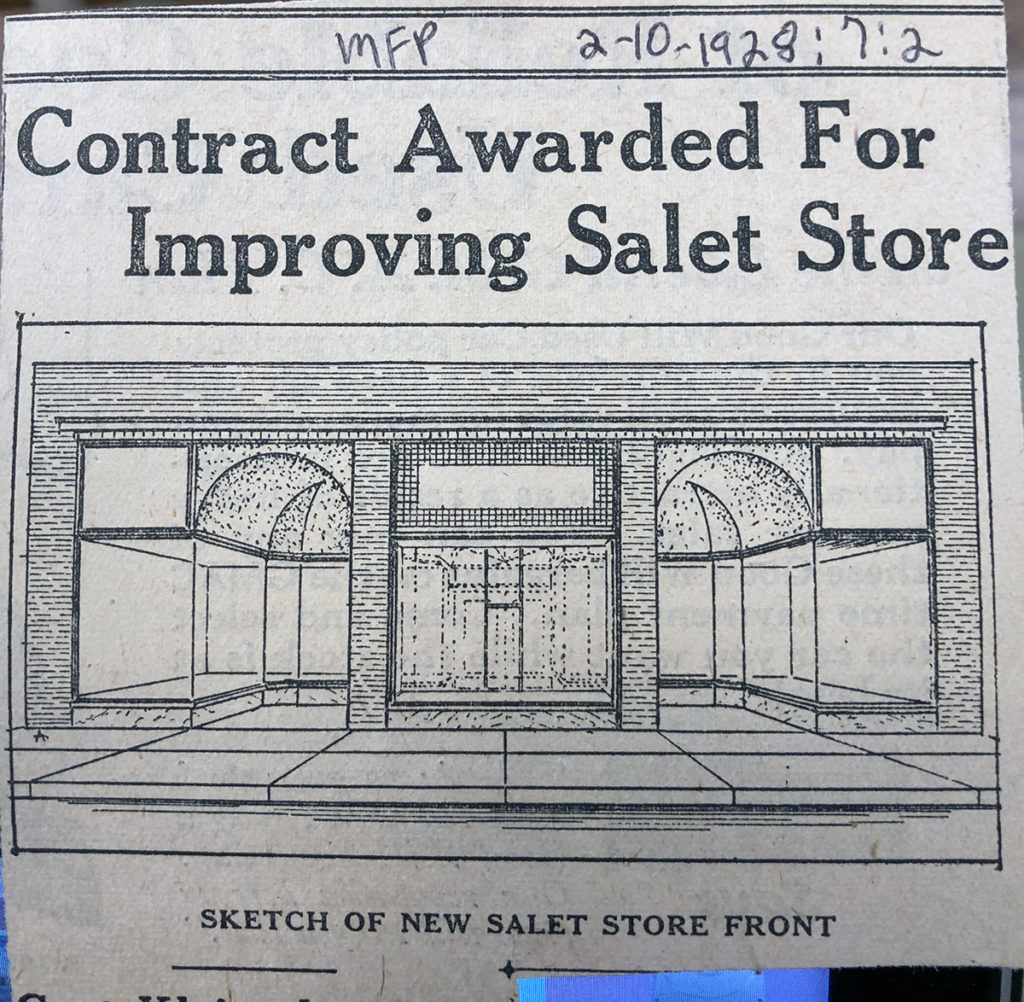
Hard times
Tragedy struck the family in September of 1963 when Louis Salet, on the first stop of a planned round-the-world trip, drowned during an early-morning swim in Honolulu, Hawaii. He was remembered as a civic-minded man who had been fund chairman of the Blue Earth County Red Cross since 1939, and trustee for the Mankato YMCA and Salvation Army. He had also served the old Mankato Community Chest, predecessor to the United Way.
Leon’s son, Richard, ran the store for another decade before deciding to close due to the combined results of declining sales and impending urban renewal efforts. One by one, the stores that had been added to the Salet’s family had closed down, leaving only the original store in operation. Richard repeated what his father had told him: Although it seemed an ideal location, the store was not located where the retail action was.
The Salet’s store sold its remaining merchandise, and the building was torn down.
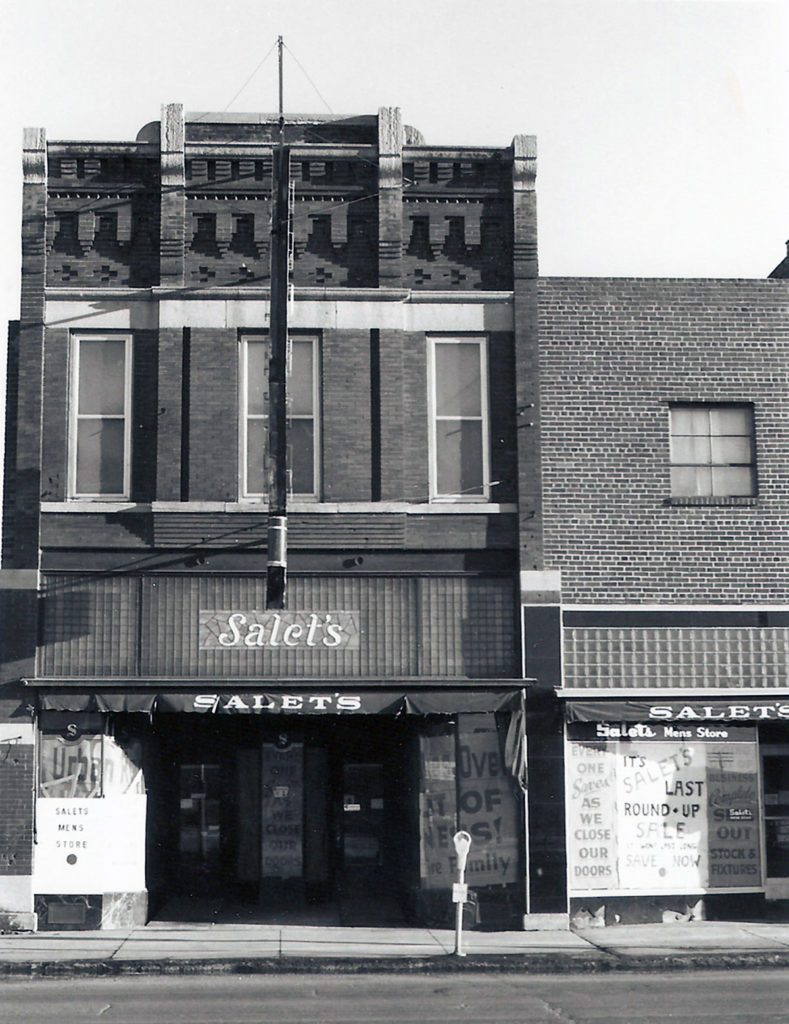
Remembering
Former Salet’s employees continued to gather and remember the store. In September 1982, Free Press writer Tim DeMarce reported on a gathering of the Salet Keen-Agers at the Moose Club. “I just can’t explain how close we feel with each other,” said Harriet Tillman, an accountant from 1936-63. “Working there was just like family. We became, and still are, very close friends.”
It was reported that Mr. Salet would let farmers eat their lunch, brought from home in gunny sacks and crock pots, on the roof of the back addition of the store in an area employees called the “roof garden.” In the winter, farmers were allowed to sit around the furnace in the store basement, and Mrs. Salet would have coffee on for the first arrivals.
It’s no wonder, then, that employees felt like family, and were willing to go above and beyond to help out.
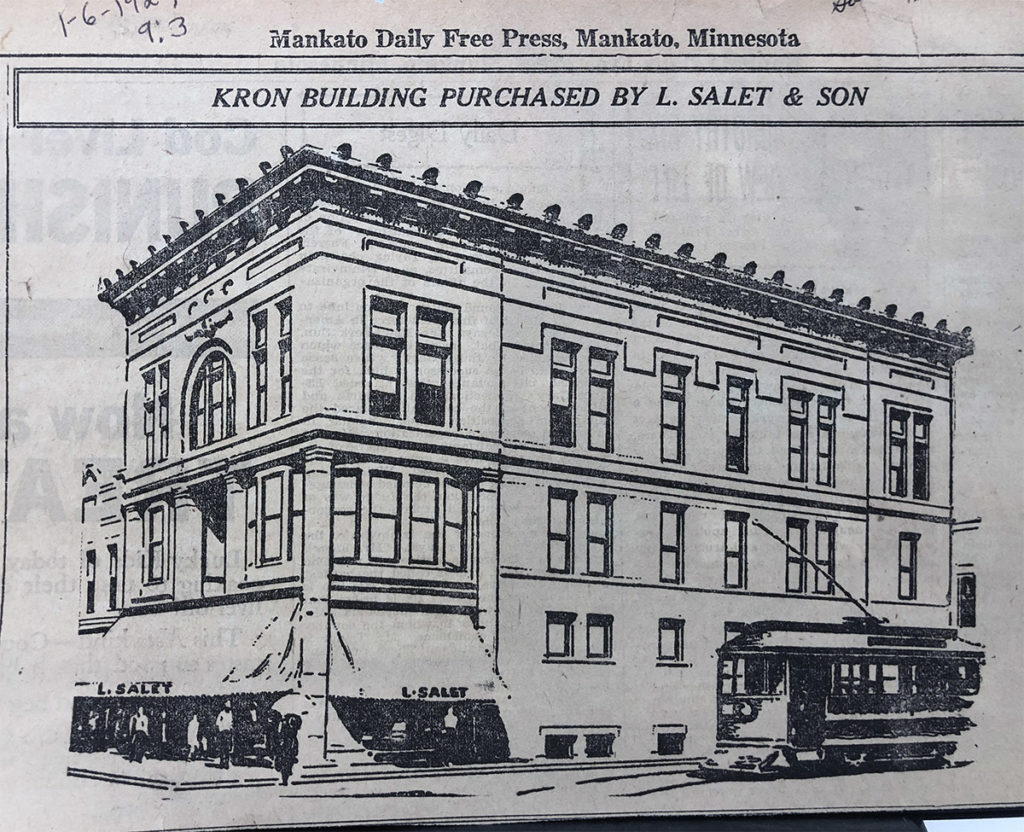
“Everybody had to do an honest day’s work at our store,” said Ann O’Brien. “If there were no customers, we had to cut up yard goods in dress sizes to keep busy.” Talking was discouraged, and clerks were expected to stay until the last customer left on Saturday night. Many nights, it seemed, there was a last-minute rush of customers just before 9 pm when the movies got out.
It’s no wonder that the store was so successful for so many years, always with a Salet in charge. Said Tillman: “Mr. Salet, Jr., would be thrilled to death that we’re still getting together. He’d be at all the meetings. He always told us ‘you are the crew — I’m just the captain of the ship.’ He was very close to each and every one of his employees, and they could go to his office to discuss things in a very private and understanding way.”

